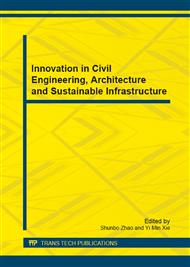p.814
p.818
p.823
p.826
p.833
p.838
p.844
p.848
p.852
Mitigation of Seismic Risks to Soft-Storey Structures Using Toggle-Brace-Damper Systems
Abstract:
Soft-storey mechanism is characterized by a sudden reduction of lateral stiffness in one or more levels of a structure. Soft-storey is often observed in the ground level due to the absence of wall or cladding. With recent develop of energy dissipation systems, soft-storey mechanism can be corrected by addition of a damper-brace assembly. In particular, this paper investigates the effect of toggle-damper-brace systems on such situations. Governing equations including the magnification factor and lateral stiffness contributed by a toggle-damper-brace are formulated. It was found that a toggle-damper-brace system, if proportioned correctly, will significantly increase the travel in the damper and overall stiffness of structure can be enhanced. An illustrative example is presented using nonlinear time history analysis implemented on MATLAB.
Info:
Periodical:
Pages:
833-837
Citation:
Online since:
November 2012
Authors:
Keywords:
Price:
Сopyright:
© 2012 Trans Tech Publications Ltd. All Rights Reserved
Share:
Citation:


